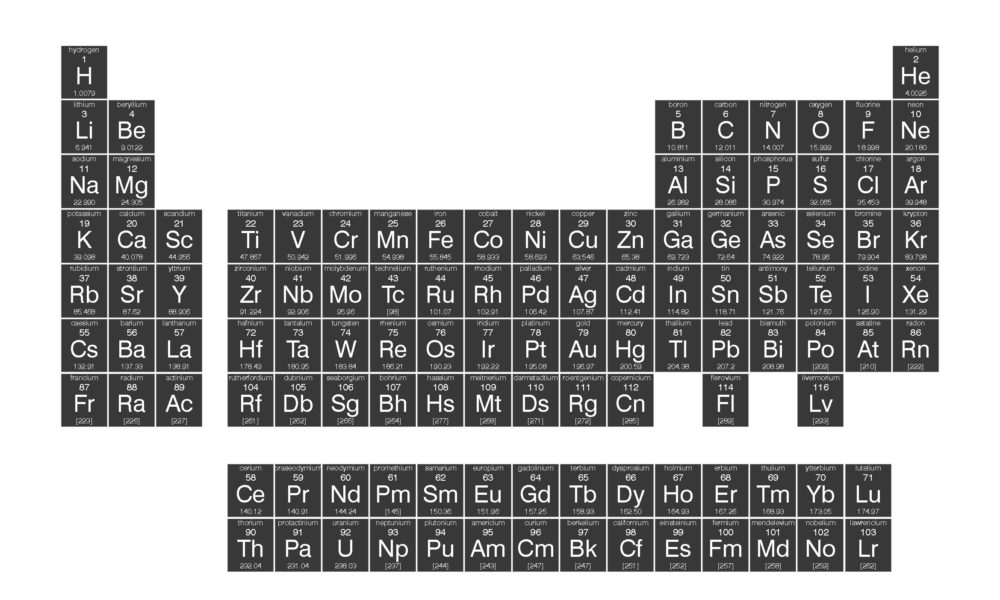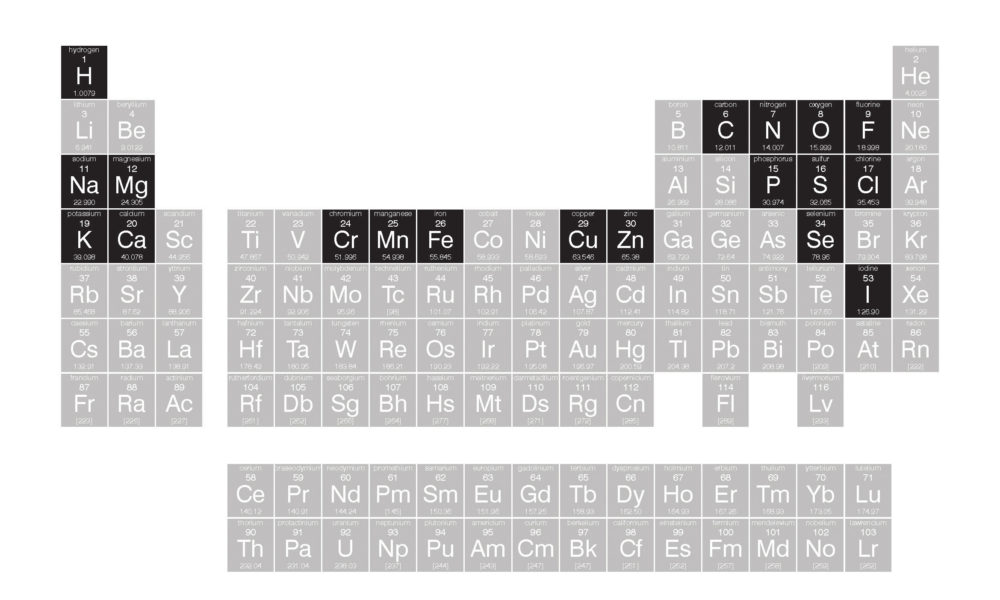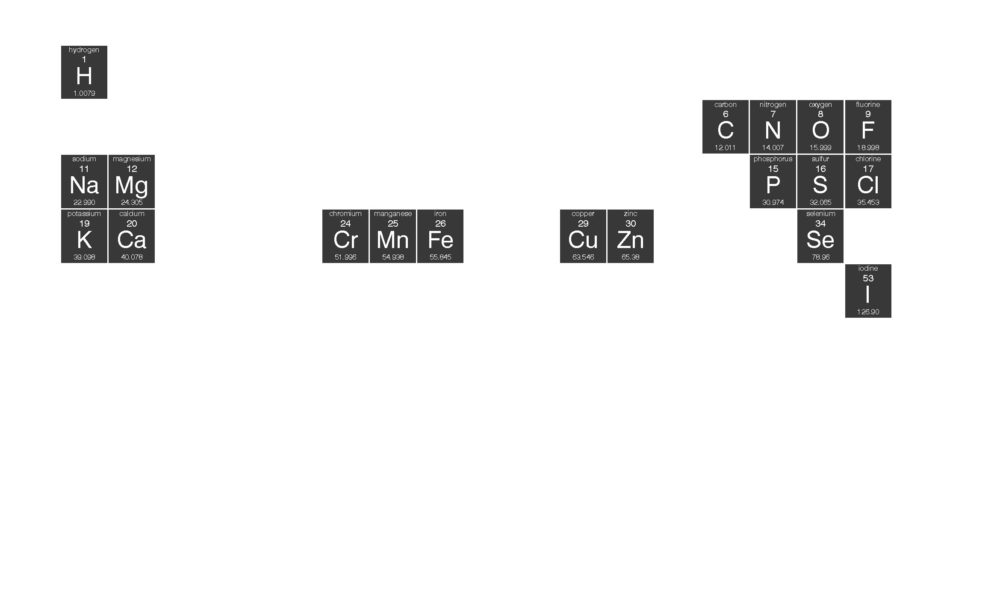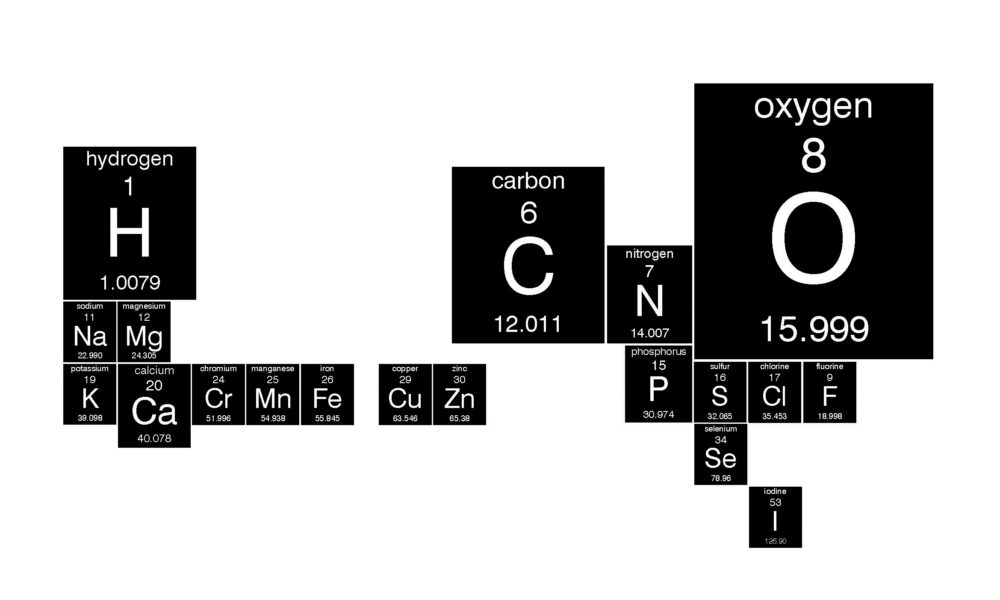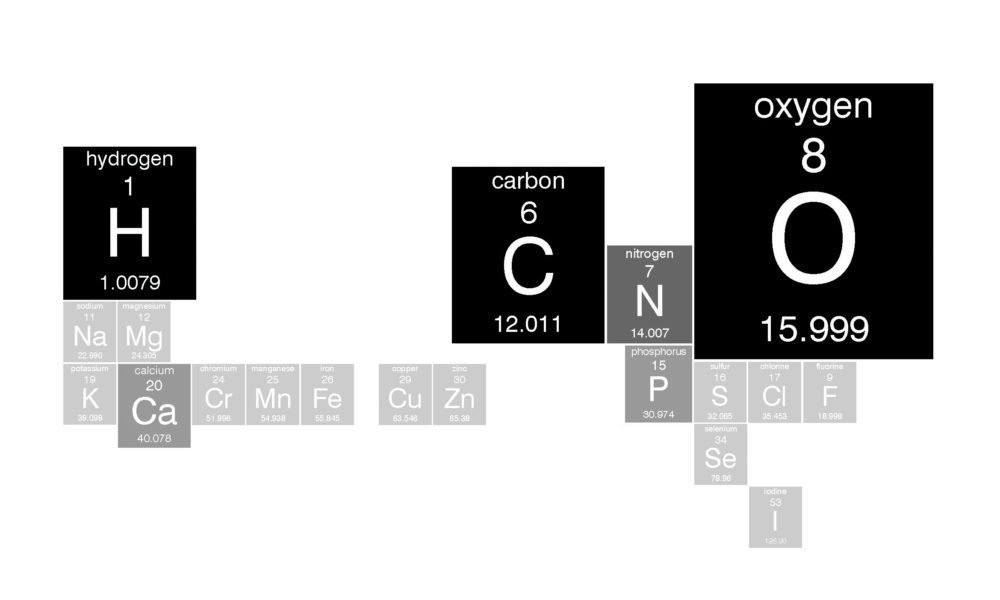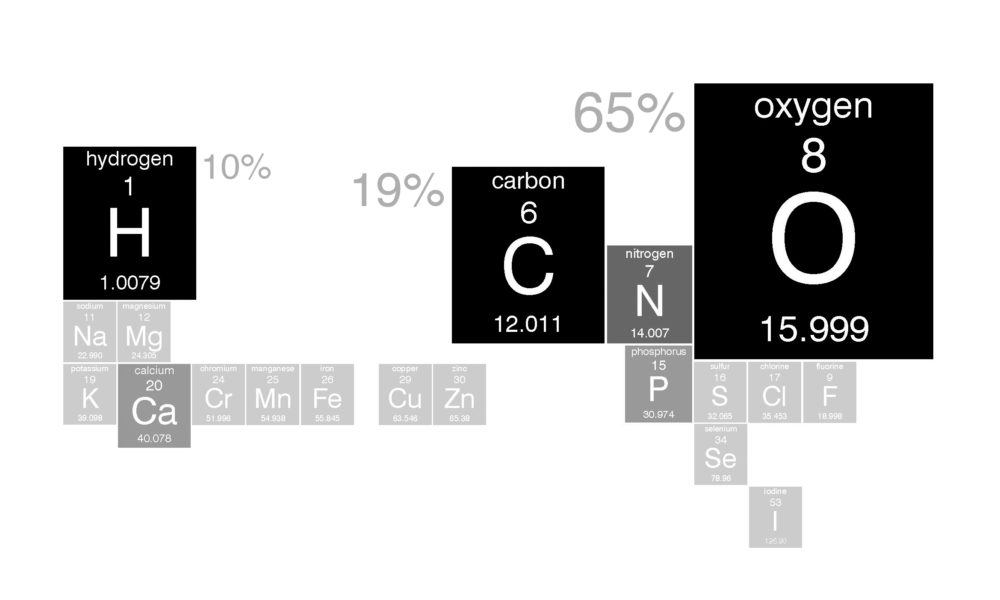RESEARCH
Design, reinforced by research, reveals an urgent call to liberate city life from the burden of outmoded practices. A community’s need for sanitary and sensible disposal of corpses is intertwined with the need of survivors to organize meaningful rituals and to lastingly memorialize the deceased.
DeathLAB’s body of research includes critically theoretical spatial propositions, data projections, scientific inquiry, and aims to develop ways to reduce the adverse impacts of our living years on the environment.
MAJOR CONSTITUENT ELEMENTS OF THE HUMAN BODY
- 99% of human body mass is made up of only six elements: oxygen, carbon, hydrogen, nitrogen, calcium, and phosphorous.
- The human body has essentially the same chemical basis as the earth itself, making it suitable to contribute to a natural ecology.
- Due primarily to misinformed health concerns and ingrained cultural norms, current funerary practices truncate the process of grief, detach our connection to the deceased, occupy land in perpetuity, and pollute the environment. While “natural burial” is a sensible, low-impact alternative where proximate open space is readily available, this option does not address the predicament of contemporary global cities and urban density. Therefore, alternative options need to be considered.
